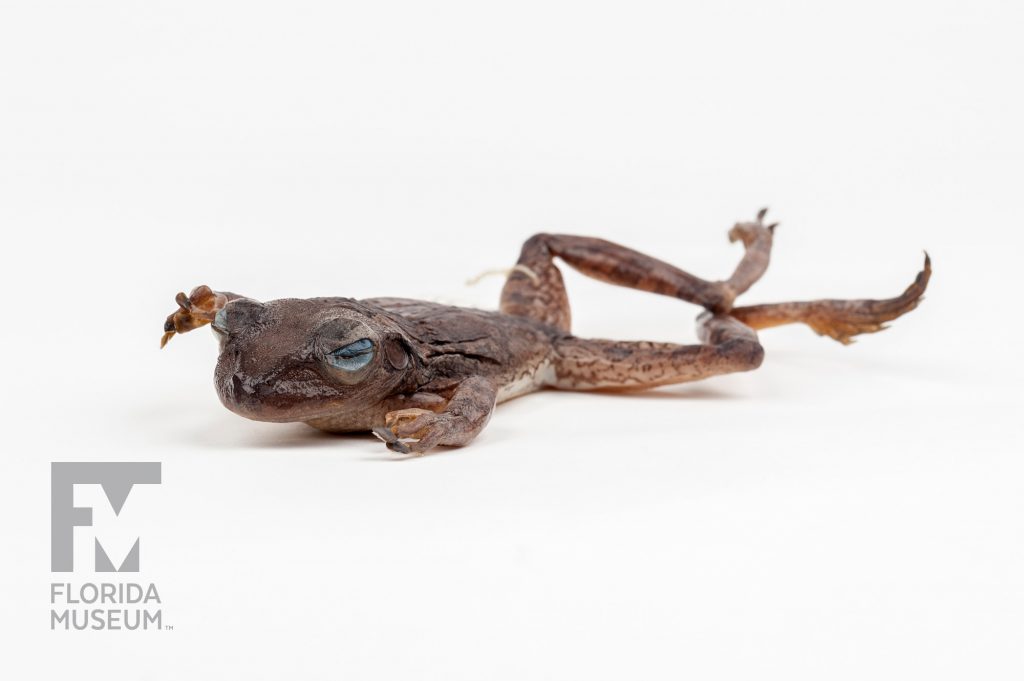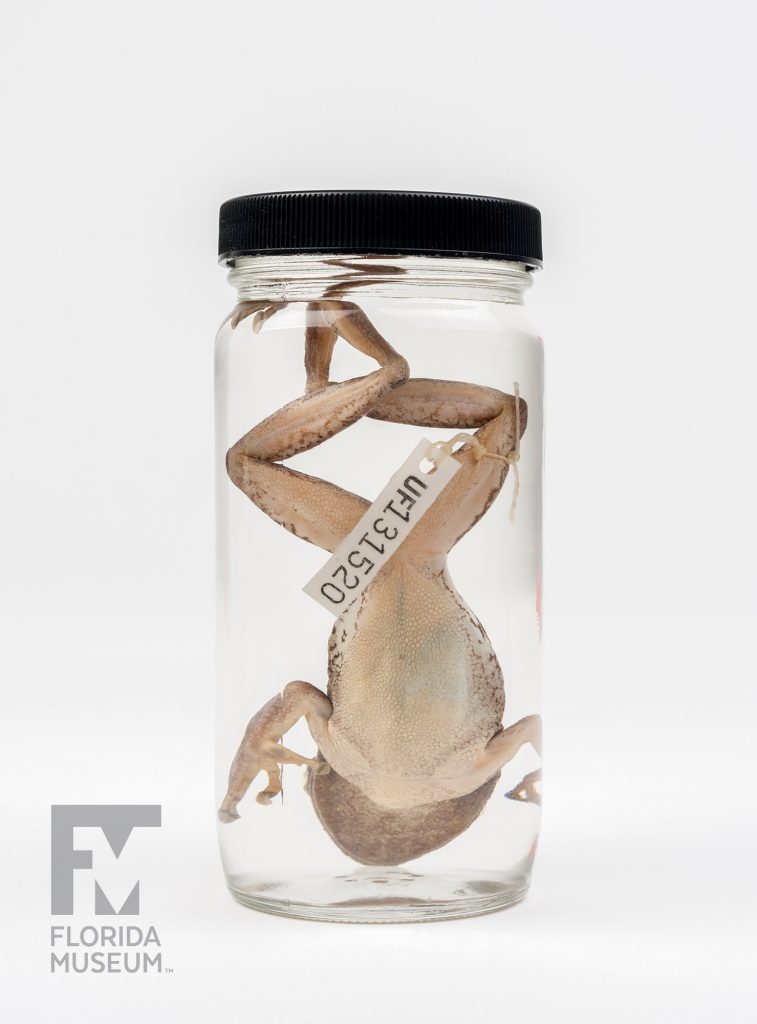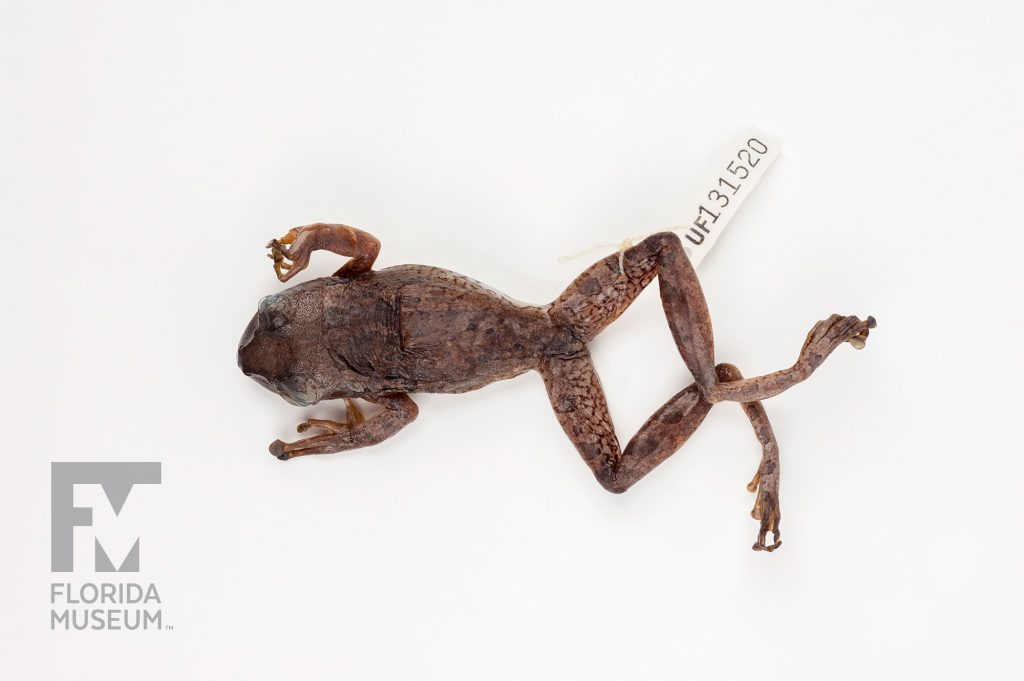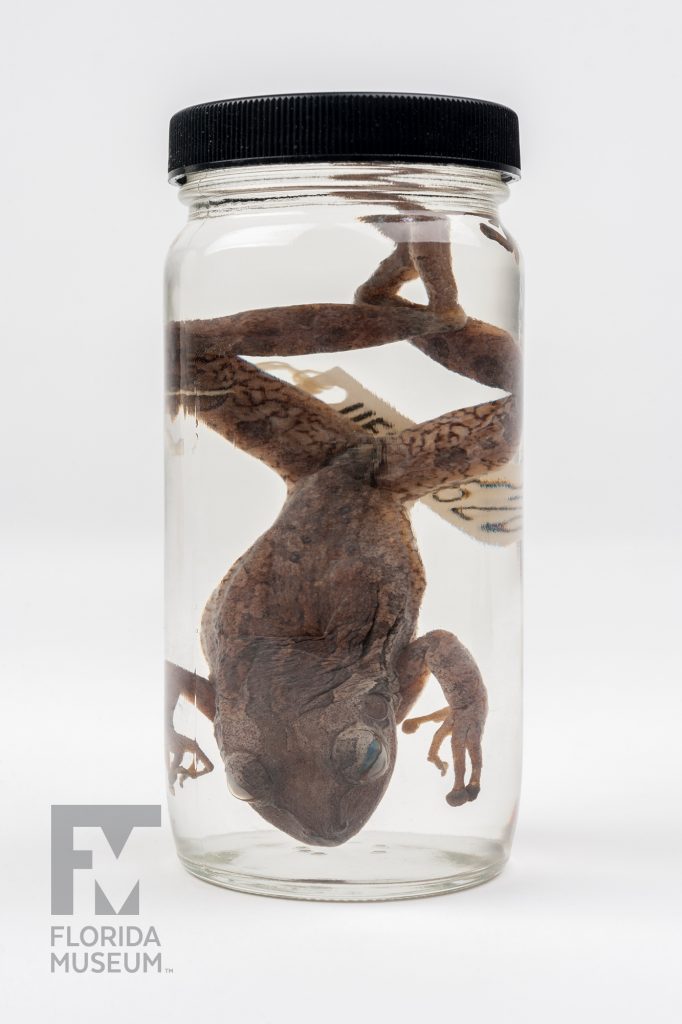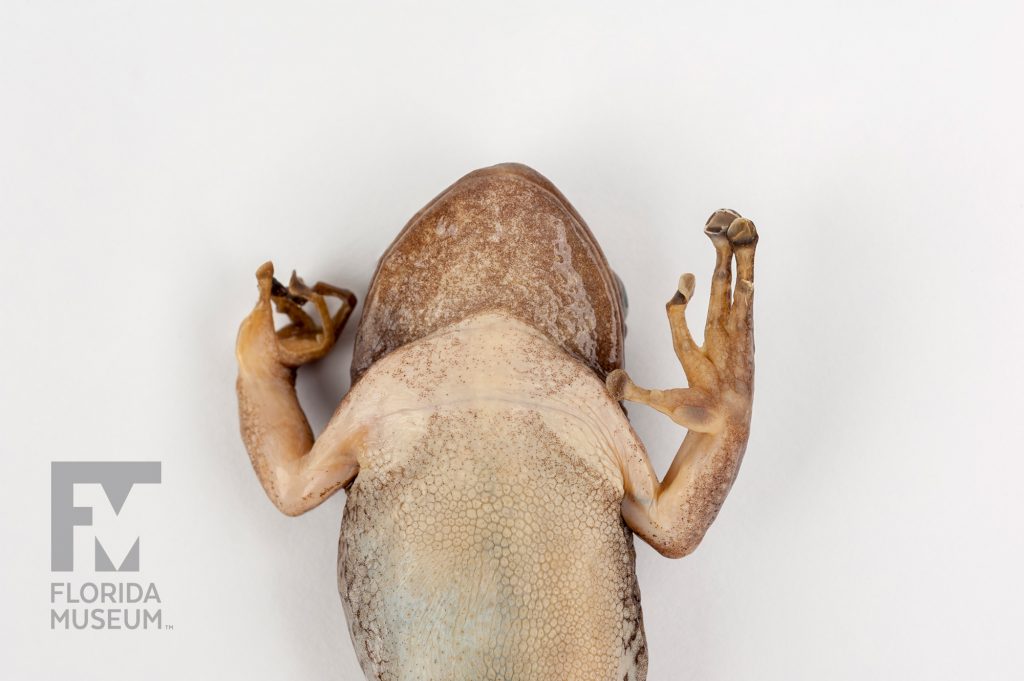The earliest records of Cuban Tree Frogs in Florida date to the 1920s in the Keys. They now are found as far north as South Carolina and Louisiana. Climate will determine their ultimate distribution – if current warming continues, they could become established across most of the Southeast.
Summary
Cuban Tree Frog (Osteopilus septentrionalis)
From Miami-Dade Co., Florida, Mar. 2002
Collection
Story
By at least the mid-1920s, Cuban Tree Frogs were established in the Florida Keys, likely having arrived via cargo transported on ships. The species is now found in the majority of counties in Florida, including Alachua County where the University of Florida is based. Records of this invasive species now extend beyond Florida into neighboring states and as far as South Carolina and Louisiana.
This species, native to islands in the Caribbean including Cuba, is the largest species of tree frog found in Florida and reaches up to 5 inches in length. This hardy species is easily transported by humans in cargo and plants. Females can lay more than 10,000 eggs in a single breeding season. They have a negative impact on local wildlife because they eat native frog species as well as other native species of lizards and insects.
In urban and suburban areas they are common in and around houses, and often make themselves conspicuous by clinging to windows on wet nights and making their distinctive raspy mating call. While you can take measures to reduce the number of Cuban Tree Frogs in your own yard, large-scale eradication efforts will be necessary if we want to effectively remove this invasive frog species.
Dave Blackburn
Associate Curator, Herpetology*
Florida Museum of Natural History
Exhibit
On display Sept. 23, 2017-Jan. 7, 2018, Rare, Beautiful & Fascinating: 100 Years @FloridaMuseum celebrated the Museum’s rich history. Each Museum collection was asked to contribute its most interesting items and share the stories that make them special. Though the physical exhibit is closed, this companion website remains online, providing an opportunity to experience the Florida Museum’s most treasured specimens.
Exhibit Area: Objects Tell Stories
Theme: Invasive Species of Florida
 Want to see more? Explore more than 300 breathtaking color photos of plants, animals, fossils and cultural heritage materials from the Florida Museum of Natural History’s collections in the award-winning book All Things Beautiful available from the University Press of Florida.
Want to see more? Explore more than 300 breathtaking color photos of plants, animals, fossils and cultural heritage materials from the Florida Museum of Natural History’s collections in the award-winning book All Things Beautiful available from the University Press of Florida.
*This title was accurate at the time the exhibit was on display in 2017. Please visit the collection website to verify current staff and student information.
